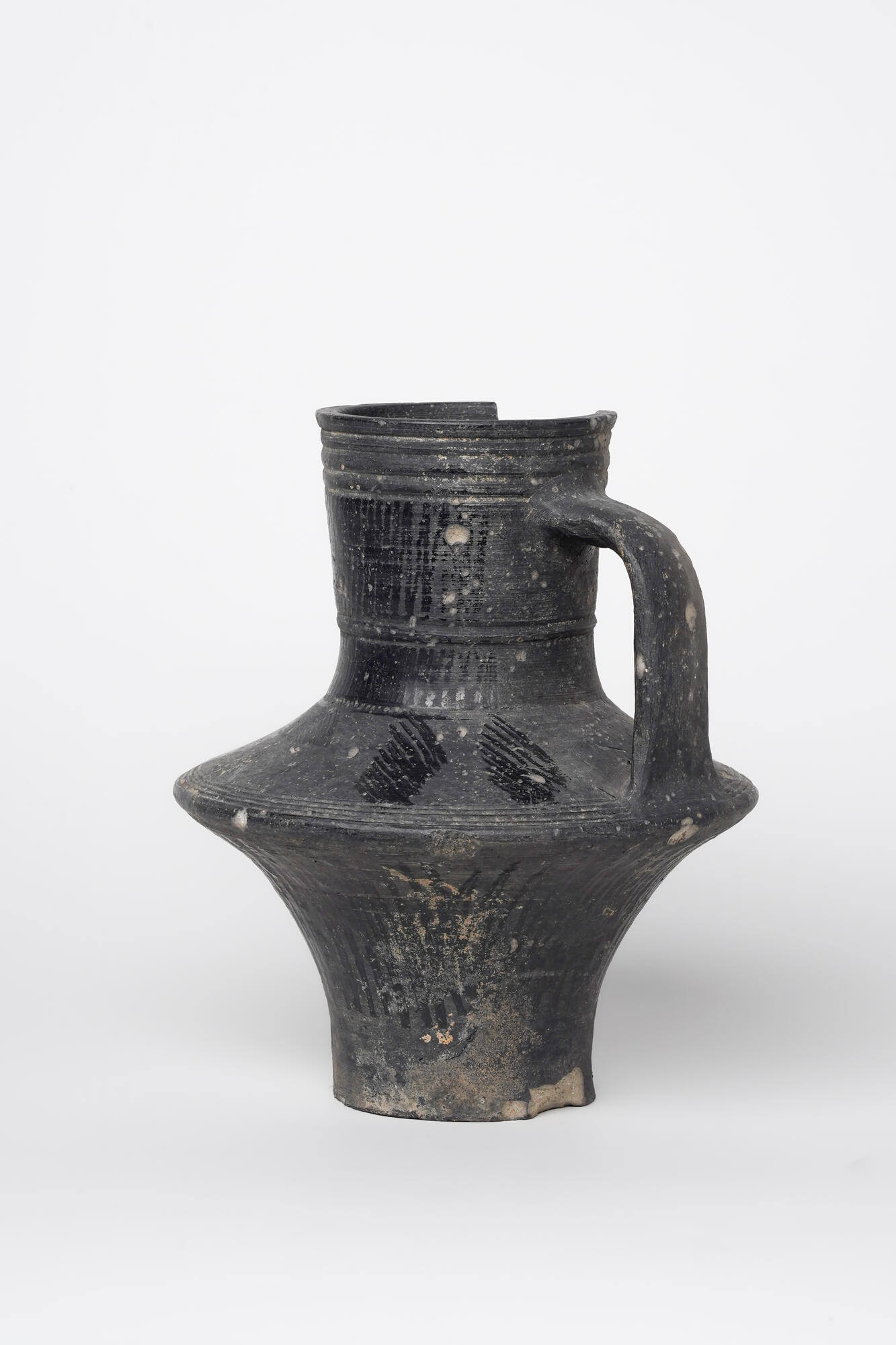The Kolomna Museum of Local History displays tableware and kitchenware of various shapes and sizes: large and small clay pots, jugs, and bowls. Kolomna pottery was famous for the production of burnished vessels.
Burnishing was one of the oldest methods of decorating earthenware. It made the surface harder and less water-permeable. There is red and black burnished pottery. Most of the vessels in the museum are black burnished. This technique was common in many cities of Moscow from the 16th century. Prior to firing, the surface of dried vessels was treated with a special polishing tool. A smooth pebble could be used as such. Then the products were fired in a smoky flame without access to oxygen.
The firing of black burnished pottery is one of the most interesting stages. As a result of this process, the product acquires a silvery or resinous black glossy surface. The final shade depends on the type of wood chosen for burning and the chemical reactions that take place. Old rags may also have been used as a source of smoke. It was probably the choice of smoke source that gave rise to the name “witches’ ware”. The reductant is usually carbon monoxide, which is produced by burning organic matter such as coal, wood and other objects.
There is another method of blackening ceramics: “dipping” the items in sawdust. After firing, the products are taken out of the kiln at around 700°C and dipped into a sealed vat of sawdust. This is a spectacular technique that potters often demonstrate at festivals these days. But at the same time, it is labor-intensive and the pieces often crack due to the differences in temperature.
Until the 18th century, the burnishing technique had dominated over glazing completely due to the high cost of making a good glaze and firing it properly. In the 18th century, earthenware gradually gave way to the rapidly developing porcelain, which at first was used to make simple peasant utensils, and then almost disappeared from everyday use. Interestingly enough, the products made in this technique were not used for cooking, as they lost their color while in the fire of the oven. However, such cookware was slower to ferment various products, especially dairy products, which contributed to its wide spread.
Burnishing was one of the oldest methods of decorating earthenware. It made the surface harder and less water-permeable. There is red and black burnished pottery. Most of the vessels in the museum are black burnished. This technique was common in many cities of Moscow from the 16th century. Prior to firing, the surface of dried vessels was treated with a special polishing tool. A smooth pebble could be used as such. Then the products were fired in a smoky flame without access to oxygen.
The firing of black burnished pottery is one of the most interesting stages. As a result of this process, the product acquires a silvery or resinous black glossy surface. The final shade depends on the type of wood chosen for burning and the chemical reactions that take place. Old rags may also have been used as a source of smoke. It was probably the choice of smoke source that gave rise to the name “witches’ ware”. The reductant is usually carbon monoxide, which is produced by burning organic matter such as coal, wood and other objects.
There is another method of blackening ceramics: “dipping” the items in sawdust. After firing, the products are taken out of the kiln at around 700°C and dipped into a sealed vat of sawdust. This is a spectacular technique that potters often demonstrate at festivals these days. But at the same time, it is labor-intensive and the pieces often crack due to the differences in temperature.
Until the 18th century, the burnishing technique had dominated over glazing completely due to the high cost of making a good glaze and firing it properly. In the 18th century, earthenware gradually gave way to the rapidly developing porcelain, which at first was used to make simple peasant utensils, and then almost disappeared from everyday use. Interestingly enough, the products made in this technique were not used for cooking, as they lost their color while in the fire of the oven. However, such cookware was slower to ferment various products, especially dairy products, which contributed to its wide spread.








